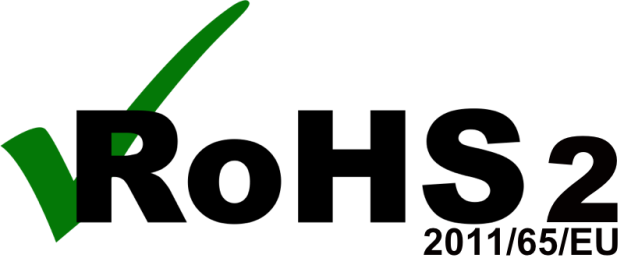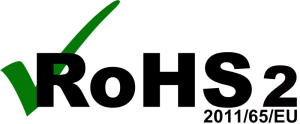The RoHS 2 Directive 2011/65/EU must be transposed into national laws by 2nd January 2013.
Directive 2011/65/EU entered into force on 21st 2011 and requires the Member States to transpose the provisions into their respective national law by 2nd January 2013. The RoHS 2 Directive is part of the European Union’s horizontal waste management legislation.
The RoHS 2 Directive is part of the European Union’s horizontal waste management legislation. As we know, the RoHS 1 Directive is for 2002/95/EC. On the restriction of the use of certain hazardous substances in electronic and electrical equipment (EEE). The Directive 2011/65/EU is reffed to as RoHS 2.
RoHS and REACH are two different acts with different scopes and objectives. When overlaps occur, the strongest restriction should be applied.
ACME PCB Assembly provides RoHS 2 Directive assembly service in Carson, California. and Our PCB Suppliers to ACME PCB Assembly conform with RoHS 2 Directive.
How do you know if RoHS 2 applies to your products? if your product not EEE, or out of scope, provisions of RoHS 2 don’t apply, you don’t need to worry about it. By the way, automated integrated circuit board and printed circuit board (bare board) testers, CNC lathes, bridge-type milling and drilling machines, metal forming presses, they all benefit from an exclusion. The list below is the EU RoHS 2 Directive Exemptions to RoHS 2
A total of 16 new exemptions, primarily for specific medical devices applications have been added to the EU RoHS 2 Directive 2011/65/EU.
- 2014/1/EU Exemption for lead as an alloying element for bearings and wear surfaces in medical equipment exposed to ionizing radiation
- 2014/2/EU Exemption for cadmium in phosphor coatings in image intensifiers for X-ray images until 31 December 2019 and in spare parts for X-ray systems placed on the EU market before 1 January 2020
- 2014/3/EU Exemption for lead acetate marker for use in stereotactic head frames for use with Computed Tomography and MRI and in positioning systems for gamma beam and particle therapy equipment
- 2014/4/EU Exemption for lead enabling vacuum-tight connections between aluminum and steel in X-ray image intensifiers
- 2014/5/EU Exemption for lead in solders on printed circuit boards, termination coatings of electrical and electronic components and coatings of printed circuit boards, solders for connecting wires and cables, solders connecting transducers and sensors that are used durably at a temperature below – 20 °C under normal operating and storage conditions
- 2014/6/EU Exemption for lead in the surface coatings of pin connector systems requiring non-magnetic connectors which are used durably at a temperature below – 20 °C under normal operating and storage conditions
- 2014/7/EU Exemption for lead in solders, termination coatings of electrical and electronic components and printed circuit boards, connections of electrical wires, shields and enclosed connectors which are used (a) in magnetic fields within the sphere of 1 m radius around the isocentre of the magnet in medical magnetic resonance imaging equipment, including patient monitors designed to be used within this sphere, or (b) in magnetic fields within 1 m distance from the external surfaces of cyclotron magnets, magnets for beam transport and beam direction control applied for particle therapy
- 2014/8/EU Exemption for lead in solders for mounting cadmium tellurium and cadmium zinc tellurium digital array detectors to printed circuit boards
- 2014/9/EU Exemption for lead and cadmium in metallic bonds creating superconducting magnetic circuits in MRI, SQUID, Nuclear Magnetic Resonance or Fourier Transform Mass Spectrometer detectors
- 2014/10/EU Exemption for lead in alloys, as a superconductor or thermal conductor, in medical devices (category 8) and/or in industrial monitoring and control instruments
- 2014/11/EU Exemption for hexavalent chromium in alkali dispensers used to create photocathodes in X-ray image intensifiers until 31 December 2019 and in spare parts for X-ray systems placed on the EU market before 1 January 2020
- 2014/12/EU Exemption for lead in solders on printed circuit boards of detectors and data acquisition units for Positron Emission Tomographs which are integrated into Magnetic Resonance Imaging equipment
- 2014/13/EU Exemption for lead in solders on populated printed circuit boards used in Directive 93/42/EEC class IIa and IIb mobile medical devices other than portable emergency defibrillators
- 2014/14/EU Exemption for 3,5 mg mercury per lamp in single capped compact fluorescent lamps for general lighting purposes < 30 W with a lifetime equal to or above 20000 h
- 2014/15/EU Exemption for lead, cadmium and chromium in reused spare parts, recovered from medical devices placed on the market before 22 July 2014 and used in category 8 equipment placed on the market before 22 July 2021, provided that reuse takes place in audible closed loop business-to-business return systems, and that the reuse of parts is notified to the consumer
- 2014/16/EU Exemption for lead as an activator in the fluorescent powder of discharge lamps when used for extracorporeal photopheresis lamps containing BSP phosphors





